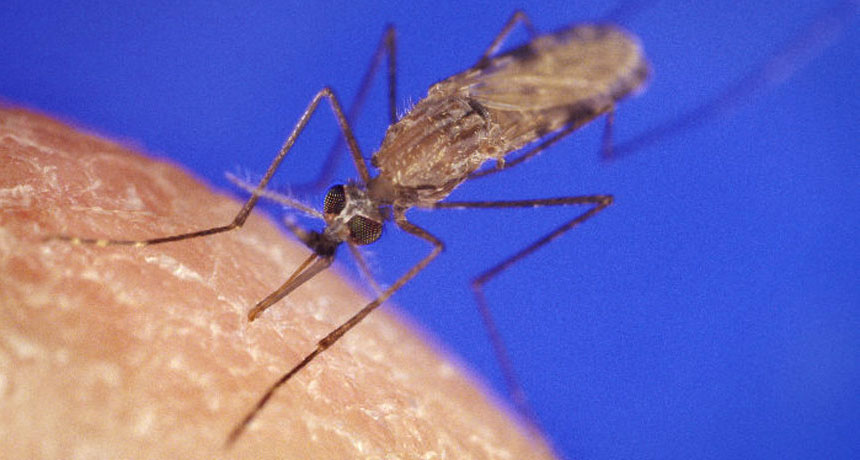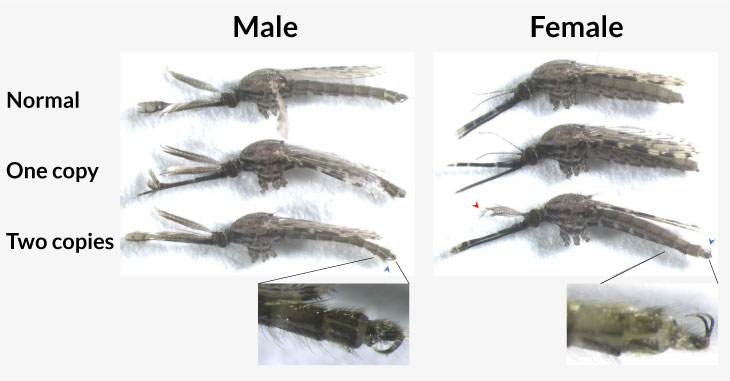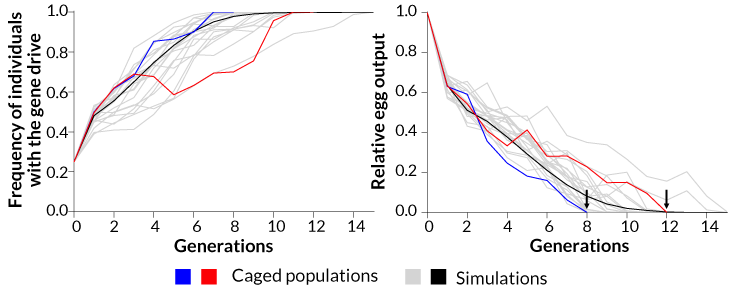Gene editing wiped out a population of mosquitoes in lab tests
Success with the genetic engineering tool raises hopes of eliminating this carrier of malaria

The malaria-carrying mosquito Anopheles gambiae’s days may be numbered. Scientists have devised a gene drive that wiped out the mosquito’s populations in lab tests.
JAMES D. GATHANY/CDC
Gene editing may push a species of malaria-carrying mosquito to extinction.
These new results come from a small-scale laboratory study. Researchers used a genetic engineering tool to make changes to species called Anopheles gambiae (Ah-NOF-eh-lees GAM-bee-aye). As a result, the mosquitoes stopped producing offspring in eight to 12 generations. The researchers reported this September 24 in Nature Biotechnology. If the finding holds up in larger studies, this tool could be the first capable of wiping out a disease-carrying mosquito species.
“This is a great day,” says James Bull. He’s an evolutionary biologist at the University of Texas at Austin. He was not involved in the study. “Here we are with a technology that could radically change public health for the whole world.” That’s because A. gambiae is the main mosquito spreading malaria in Africa. The disease kills more than 400,000 people each year worldwide, according to the World Health Organization. Many of those who die are children.
The researchers changed the mosquitoes’ genes with a gene drive. Gene drives use the molecular “scissors” known as CRISPR/Cas9 to copy and paste themselves into an organism’s DNA at precise locations. They’re designed to break the rules of inheritance. They can quickly spread a genetic tweak to all offspring.
The new gene drive breaks a mosquito gene called doublesex. Female mosquitoes that inherit two copies of the broken gene develop like males. They are unable to bite or lay eggs. Being unable to bite means they can’t spread the malaria parasite. Males and females that inherit only one copy of the disrupted gene develop normally and are fertile. Males don’t bite, whether they have the gene drive or not.

Changing genes
In each of two cages, researchers placed 300 female and 150 male normal A. gambiae mosquitoes. Then they added 150 males carrying the gene drive. In each generation, 95 percent to more than 99 percent of offspring inherited the gene drive. Normally, only 50 percent of offspring inherit a gene.
Within seven generations, all of the mosquitoes in one cage carried the gene drive. No eggs were produced in the next generation. The population died out. In the other cage, it took 11 generations for the gene drive to spread to all of the mosquitoes and crash the population. The insects in that cage made no offspring in generation 12.
Other gene-drive studies have done computer simulations to predict how long it would take for the drives to spread through a population. This is the first time the approach has succeeded in actual mosquitoes.

Other types of gene drives also have been passed to offspring at high rates. But in those experiments, DNA changes, or mutations, that destroy the cutting site for CRISPR/Cas9 popped up. That allowed the mosquitoes that carry the mutation to resist the drive.
A few mosquitoes in the new study also developed mutations. However, “no resistance was observed,” says study coauthor Andrea Crisanti. He’s a medical geneticist in England at Imperial College London. Those mutations broke the doublesex gene. Females with these broken genes were sterile and couldn’t pass the mutations on to the next generation.
All insects have some version of doublesex. “We believe that this gene may represent [a vulnerability] for developing new pest-control measures,” Crisanti says.
A. gambiae likes to bite people. That makes it good at spreading malaria from person to person. The gene drive now raises the prospect of deliberately causing the extinction of this species.
“If you have a technology that could eradicate that [mosquito], it would be unethical not to use it,” says Omar Akbari. He is a geneticist at the University of California, San Diego. He was not involved in the work. But Akbari thinks it is unlikely that the gene drive would work as well in the wild as it did in the lab. That’s because resistance is bound to pop up at some point.
No one knows what will happen to the environment if all the mosquitoes die, either. There could be problems for species that eat mosquitoes, for instance. Also unknown is whether the gene drive could be passed on to other species. What if a “James Bond–style villain” used a similar gene drive to attack honeybees or other beneficial insects, says Philipp Messer. He is a population geneticist at Cornell University in Ithaca, N.Y. “Humans will always come up with ways to abuse [technology]. And in this case, it’s just so easy. That’s what worries me.”







